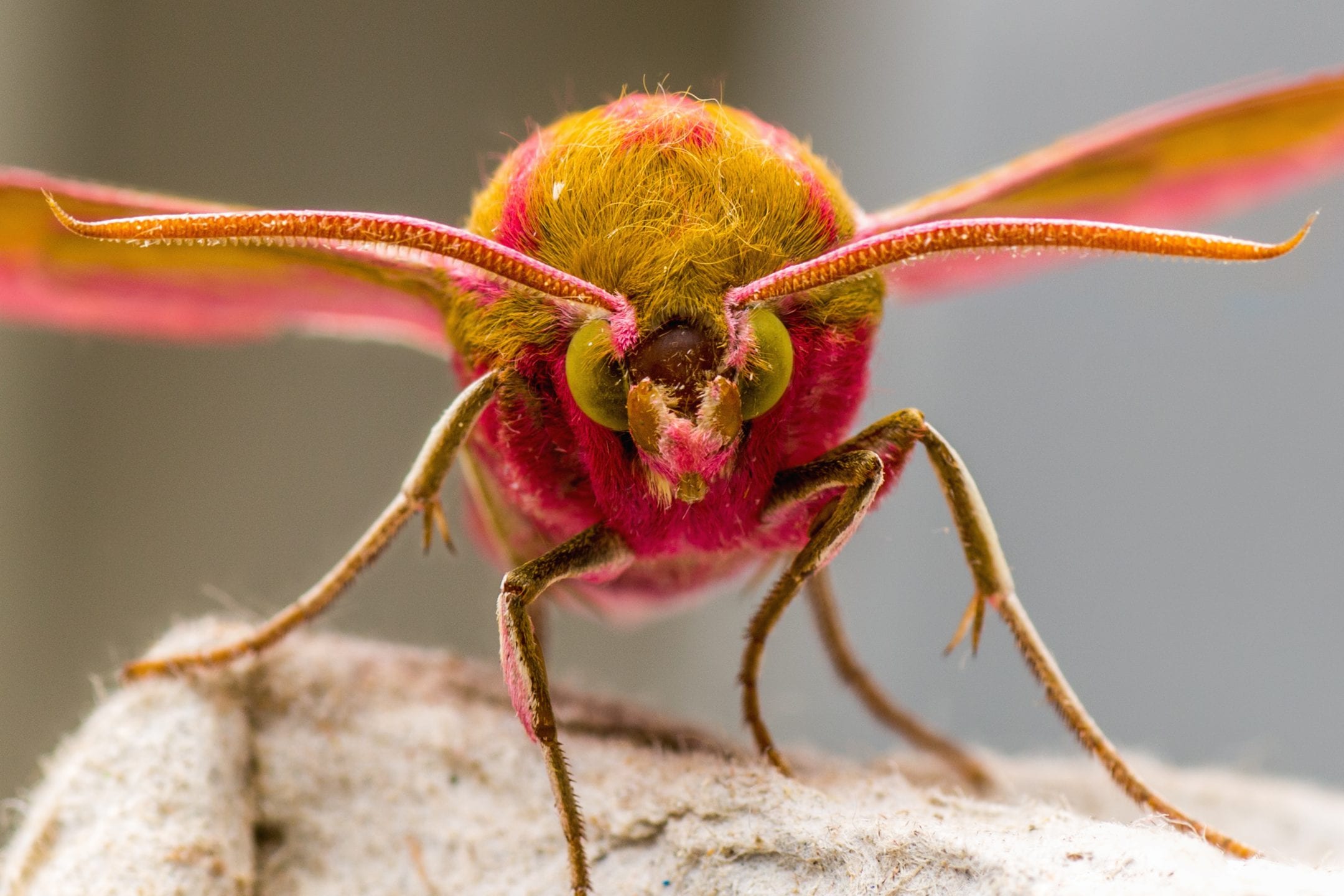Eyes of nocturnal moths are anti-reflective due to nanoscale protrusions.
Moths have unique sub-wavelength structures coating their eyes which dramatically minimize light reflection over a much broader range of wavelengths than conventional anti-reflective coatings. The outer surfaces of moth corneal lenses are covered with a regular pattern of conical protuberances, generally 200-300 nm in height and spacing. These protuberances reduce light reflection by creating a refractive index gradient between the air-lens interface, more gradually transitioning the change in light speed between the air and eye. These unique structures maximize light capture for seeing in the dark. Moth-eye inspired antireflective coatings that demonstrate high-performance over large band widths at low fabrication cost have recently been developed for solar panels, with many other potential products applications.














